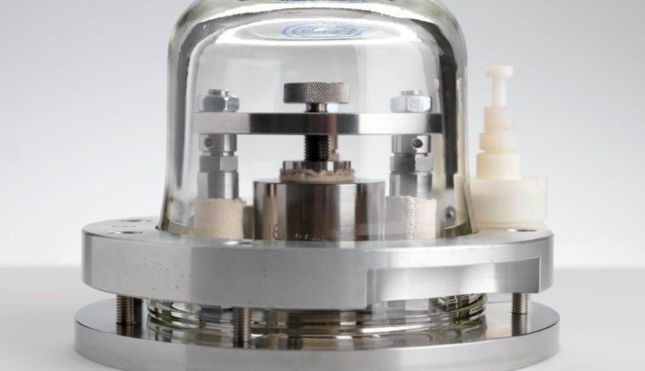The kilogram is dead ― long live the kilogram!
November 28, 2018
on
on

Researchers have changed the definition of the kilogram. Until a few days ago the kilogram was defined as the mass of a platinum/iridium prototype (‘Le grand K’) that is safely stored in a vault at the Bureau International des Poids et Mesures in Sèvres (France).
On 16 November 2018, however, during the General Conference on Weights and Measures in Versailles, it was decided to drop this definition of the kilogram and instead define the kilogram in terms of electrical current.
In a world where accurate measurements are of vital importance in many areas (consider nano technology, satellite navigation systems), the guardians of what is now the SI (Système International) had no other option than to devise a more robust definition of the kilogram.
The Planck constant is a constant of Nature that relates mass and electrical current to each other. This constant is indicated with the small letter h. The problem is that h has an unbelievably small value that is correspondingly difficult to measure.
The official start date for the new definition is 20 May 2019.
Source: National Institute of Standards and Technology (NIST)
Source: Practical Engineering
On 16 November 2018, however, during the General Conference on Weights and Measures in Versailles, it was decided to drop this definition of the kilogram and instead define the kilogram in terms of electrical current.
Why did the old kilogram have to die?
"Le grand K" has since 1889 been the standard bearer of the international system to measure mass. Several extremely accurate copies of the original have been made, which are stored in different places. Those copies are, however, not absolutely identical to the prototype, and additionally it appears that the mass has been changing over the years as a result of external influences, although that is extremely small.In a world where accurate measurements are of vital importance in many areas (consider nano technology, satellite navigation systems), the guardians of what is now the SI (Système International) had no other option than to devise a more robust definition of the kilogram.
How wrong is Le grand K?
The deviation amounts to only 50 parts per billion ― less than the mass of an eyelash. Although that is almost nothing, such a deviation can have far-reaching consequences. That is why there has been the change to an electrical measurement that is more stable, more accurate and ‘more democratic’.The new kilogram
The force that an electromagnet exerts on a metal object is directly related to the electric current through the coil of that magnet. There is therefore a direct relationship between electricity and mass.The Planck constant is a constant of Nature that relates mass and electrical current to each other. This constant is indicated with the small letter h. The problem is that h has an unbelievably small value that is correspondingly difficult to measure.
Kibble-balance
The scientist Bryan Kibble, however, succeeded in building an extremely accurate scale. This Kibble-balance (based on the already known current balance) has an electro magnet that pulls down on one side, and a weight ― for example a kilogram ― on the other side. The electric current is adjusted such that the scale is in perfect balance.‘That small h’
By measuring the current through the electromagnet with unprecedented precision, it is possible to determine the value of h with an accuracy of 0.000001% ― not a small feat when we keep in mind that h has a value in the order of 6.6 x 10–34 Js... This made the new definition of the kilogram possible ― a definition that could be called democratic because anyone with a Kibble-balance can verify the mass, anywhere in the world.The official start date for the new definition is 20 May 2019.
Read full article
Hide full article


Discussion (0 comments)